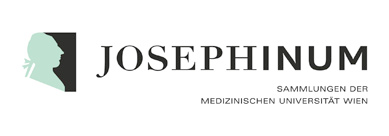VWI goes to ... / VWI invites ...
Der Kolloquienzyklus der VWI-Fellows
Die VWI-Fellows präsentieren Zwischenresultate ihrer Forschungsvorhaben im Rahmen von Kolloquien, die – im kleinen Rahmen angekündigt – auch einer akademisch und inhaltlich interessierten Öffentlichkeit zugänglich sind. Die Vorträge werden durch eine im jeweiligen Thema ausgewiesene Fachperson in Form einer Respondenz oder eines Kommentars begleitet und von den anderen Fellows und dem Publikum diskutiert.
Das Veranstaltungsformat VWI goes to … war ursprünglich aus akutem Raummangel geboren worden, konnte doch das Institut an seinem früheren Standort, am Desider-Friedmann-Platz nicht einmal eine kleine Veranstaltung organisieren. Allein aus dem Kontakt zu anderen akademischen Einrichtungen in Wien, zum Teil auch in der weiteren Region, ergab sich in der Folge – auch dank der jeweils eingeladenen Kommentatorinnen und Kommentatoren – wiederum die einzigartige Möglichkeit, die Fellows und die Forschungen des VWI mit anderen Institutionen, methodischen Ansätzen, Forschungsfragen und Ideen zu vernetzen, das Institut in den regionalen Forschungsraum noch mehr zu integrieren. Aus diesem Grund wurde entschieden, das Format auch am neuen Standort beizubehalten. Gleichzeitig eröffnete sich aber am Rabensteig auch die Gelegenheit, zu diesen Kolloquien Institutionen auch an das VWI einzuladen. Aus diesem Grund trägt ab Herbst 2016 das VWI-Kolloquium entsprechend alternierend auch die Bezeichnung VWI invites... .
| VWI invites/goes to... | |||
| Natalia Aleksiun: The Cadaver Affair, Antisemitism and the Training of Jewish Physicians in Europe between the Two World Wars | |||
Mittwoch, 18. Juni 2014, 15:00 - 16:30 Josephinum 1090 Wien, Währinger Straße 25
|
|||
VWI goes to Josephinum
As early as 1921, Christian student associations in Poland demanded a contribution of cadavers from local Jewish communities proportionate to the number of Jewish medical students, threatening to block their Jewish colleagues from participating in anatomy lectures and laboratory classes if no such contribution were made. In all cases, the right-wing student activists argued that in the face of a persistent shortage of corpses – which were indispensable to their instruction – the Jewish community had unjustly avoided sharing in the responsibility for providing specimens. In the Second Polish Republic, the conflict in and around the dissecting room brought together an amalgamation of arguments about science and progress, fair division of rights and responsibilities, and an alleged Jewish sense of religious and/or racial superiority. The students who demanded that only Jewish corpses be dissected by Jewish students described themselves as Christians with religious motivations, but their arguments often referred interchangeably to religious and nationalist categories and concepts. Ultimately, the deeper, underlying meaning of the cadaver affair can be found in the desire to segregate Jews from non-Jews. At Warsaw, Wilno (Vilnius), Lwów (Lviv), and Cracow universities, corpses were ultimately divided according to religious orientation. The desire for such a separation was further exemplified by the enforcement of a modus operandi in dissecting rooms in which Jewish and non-Jewish students worked and studied at separate tables, with the separation of Jewish from non-Jewish cadavers segregating Jewish bodies even after death.
In the wake of World War I, the affair affected medical departments across Eastern and Central Europe. While focusing on Poland, I will discuss the discourse surrounding it in comparative context. Why did the demand for Jewish cadavers in medical schools resonated with medical students in Poland, Austria, Romania, and Hungary? What were the responses of Jewish students, communal leaders and physicians? As the cadaver affair echoed the clash of Christian and Jewish religious taboos and an emerging nationalist ideology, it also reflected the rise of anti-Jewish rhetoric in these countries. Finally, the affair in the broader Central European perspective provides a window onto the politi-cal strategies embraced by various sections of Jewish communities when facing hardship or persecution. I will argue that the disturbances in and around the dissecting rooms served as a litmus test for Gentile-Jewish relations and for competing visions of the place of Jews in the nation states.
Comments by Martina Steer
Natalia Aleksiun, Associate Professor of Modern Jewish History at Touro College, Graduate School of Jewish Studies, New York and Assistant Professor of Modern History at the Institute of History, Polish Academy of Sciences. She published Where to? The Zionist Movement in Poland, 1944-1950 (in Polish) and co-edited Polin vol. 20, devoted to the memory of the Holocaust. Her articles appeared in Yad Vashem Studies, Polish Review, Dapim, East European Jewish Affairs, Studies in Contemporary Jewry, Polin, Gal Ed, East European Societies and Politics and German History.
Martina Steer, Assistant Professor for Modern Jewish History at the University of Vienna.
In Cooperation with
|
|||











